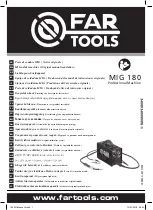
13
TYPICAL INSTALLATION
1 Connect the SLEEP power supply output (24/25/26) upstream with respect to the power supply of the control unit.
Usually, the NO contact (24/25) should be connected in series to the mains power supply (L), as indicated in Fig. 2.
2 Connect all normally open contacts (N.O.) and normally closed contacts (N.C), as described hereunder:
All the commands with N.O. contact must be connected to IN inputs of the ESA BASIC card. Connect the OUT outputs
corresponding to the inputs of the control unit.
Example: connect the Step-by-Step push button to IN 1 input (3/4), if otherwise preset, preset IN 1 as N.O. input, con-
nect the output OUT 1 (10/11) to the Step-by-Step input of the control unit.
Connect the N.C. devices, which allow the TCA recharge (usually photocells), to an IN input of ESA BASIC, which will
therefore preset as NC input. Connect the OUT output corresponding to the control unit input. The other NC inputs
can be connected indifferently to the control unit or ESA BASIC.
3 With gate stopped, calibrate the system through the TAR function.
It is mandatory to erase all radio controls stored in the receiver from the control unit and memorise them in the
receiver of ESA BASIC. The antenna of the control unit should be therefore disconnected and connected to the
special inputs 22/23.
The NC contacts of a safety edge shall be in any case connected to the special input of the control unit.
GATE STATUS INPUT
One or more inputs can be preset in “GATE STATUS INPUT” mode.
In the input preset in this way, a NO contact can be connected, such as the SCA* output contact of the control unit or the
NO contact of a limit switch.
In this mode, ESA BASIC causes the control unit to enter the SLEEP mode only if the contact returns to the NO (normally
open) status.
This might be useful in the event, for example, the TCA (automatic closure) is not activated.
*Use voltage-free contacts only. If the contacts are powered, use decoupling relays.
DIAGNOSTICS
During the normal operation, the LCD display shows the status of
inputs and outputs, as per diagram. When an input/output is acti-
vated, the related segment of the LCD display switches on.
IN 1
IN 3
IN 5
IN 2
IN 4
IN 6
OUT 1
OUT 2
OUT 3
OUT 4 OUT 6
OUT 5
WASTE DISPOSAL
If the product must be dismantled, it must be disposed according to regulations in force regarding the differentiated waste
disposal and the recycling of components (metals, plastics, electric cables, etc..). For this operation it is advisable to call
your installer or a specialised company.
Intelligent Security & Fire Ltd.


























